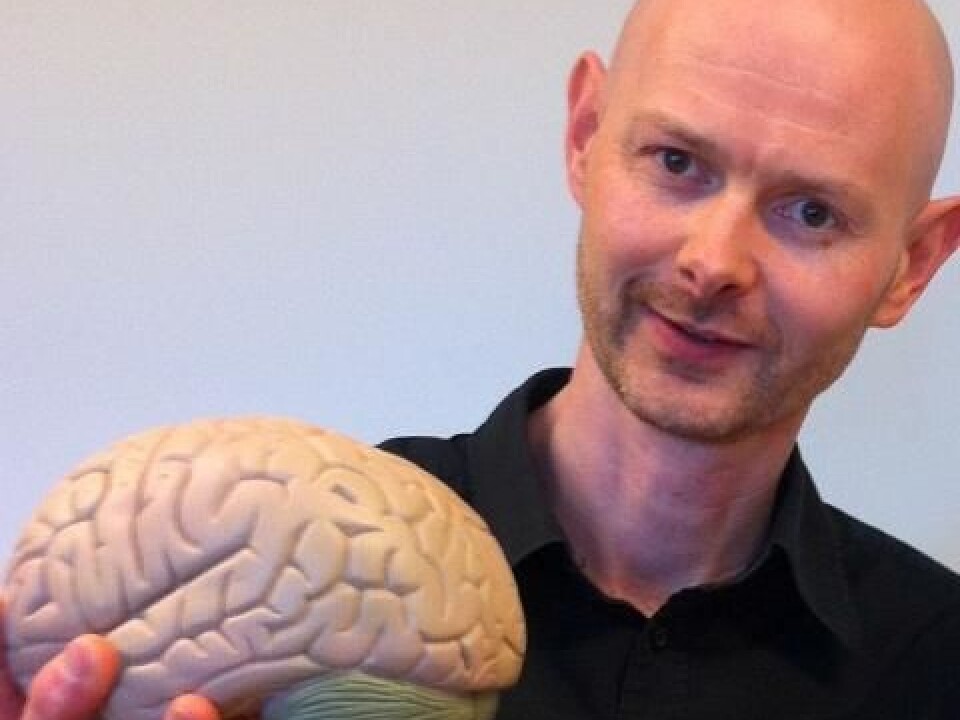This article was produced and financed by The Research Council of Norway

Same gene variant promotes pain in women, suppresses pain in men
More women than men develop chronic low back pain and sciatica. The explanation may lie with a gene variant that plays into the body’s pain regulation.
Denne artikkelen er over ti år gammel og kan inneholde utdatert informasjon.
“In our study we were surprised to discover that the same gene variant may actually promote chronic pain in women and suppress pain in men,” says Professor Johannes Gjerstad, Senior Researcher at the Norwegian National Institute of Occupational Health (STAMI).
Gjerstad headed a research project encompassing nearly 300 patients suffering from disc prolapse at Oslo University Hospital and at Haukeland University Hospital in Bergen. Patients were followed up for one year after admission.
Twice as much pain
Although everyone basically has the same genes, there are many genes that come in multiple versions – an ordinary one and a variant. Generally, the effects of this genetic variation are gender-independent, but there are exceptions.
“As expected, somewhat more men than women were referred to hospital with disc prolapse,” continues Gjerstad. “In the course of the study we observed that the men recovered faster than the women.”

Previous research findings on animals provided the researchers with a clue that the gene coding for the OPRM1 receptor – involved in the body’s pain regulation – may be responsible for this.
It turns out that the women with the less ordinary variant of this gene often experienced twice as much pain as the men who had the same gene variant. One year after their prolapse, on a pain scale from 0 to 10, these women reported an average intensity of around four, while the men averaged around two.
Roughly one in four persons, independent of gender, carries this unfortunate gene variant.
At least six in ten people suffer back pain
An estimated 60 to 80 per cent of Norway’s population experience low back pain at some point in life. No single condition costs society more in social insurance benefits. Why some people develop chronic back pain after a prolapse and others do not has long been a mystery.
Previous research data shows that a gene coding for the COMT receptor plays a role in the experience of pain half a year after a disc prolapse. The gene coding for the OPRM1 receptor, however, appears to become significant only after a full year.
The patients in the study reported their pain by questionnaire. One year post-prolapse, two out of three back patients had healed completely. But the remaining third, most of them women, continued to experience discomfort.
The insights gained from the Norwegian study may ultimately help researchers to customise prevention and treatment better.
A factor in other types of pain?
The OPRM1 receptor has no direct significance for the back’s physical condition, but rather is known to play a key role in the brain’s regulation of pain. For this reason the researchers believe their findings may be relevant to other experiences of pain.
“We think that this OPRM1 gene variant is significant for long-term pain more generally, and we would like to investigate this further,” says Gjerstad.
In addition they hope to study the relationship between genetic factors and, for instance, sick leave and disability.
Combination of genes and environment
How is it possible that the same gene variant has different effects on men and women? The answer is complex, but in short it has to do with the inherent differences between men’s and women’s brains.
Gjerstad stresses that although the OPRM1 gene is an important contributing factor, it does not fully account for why some people develop chronic back pain and others do not.
“The gene variant we have studied does not in itself cause chronic pain – nor is a man or woman who has this ‘unlucky’ gene variant doomed to suffer back pain,” he clarifies.
"Environmental factors such as psychosocial workload definitely play a role along with these genes.”
The researchers will now collaborate with a research group in Finland to attempt to replicate these findings with a larger sample of employees.
Translated by: Darren McKellep/Carol B. Eckmann

































